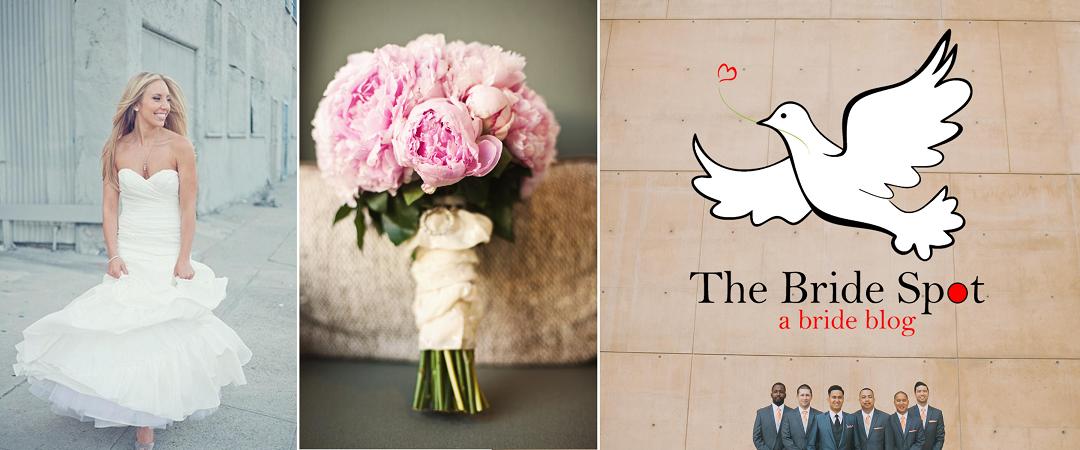A Little Wedding History Lesson
 Tuesday, July 21, 2009 at 5:12PM
Tuesday, July 21, 2009 at 5:12PM 
Over time, certain wedding practices have been consistently followed and observed at almost every wedding ever attended. The bride walks down the aisle wearing a veil and carrying a bouquet, vows are recited, wedding rings are exchanged, a first dance in danced, the bride throws her bouquet as she is whisked away to her honeymoon, and more. But have you ever wondered how these time-honored practices came about in the first place?
Here is a little Wedding History 101 for anyone interested:
1. The Bride's Veil: The veil was yellow in ancient Greece and red in ancient Rome and usually covered the bride from head to foot. It is traditionally considered bad luck for the bride to be seen by the groom before the ceremony. As a matter of fact, in the old days of marriage by purchase, the couple rarely saw each other at all. Courtship is actually a more recent historical emergence. Once the bride and groom are declared husband and wife the veil is lifted, symbolizing the presentation of the wife to her husband.
2. The Bridal Party's Attire: More often than not the bridesmaids, ushers, and the rest of the wedding party dress very much like the bride and groom. It was once common for the bride, her groom and all their friends to walk together to the church on the morning of the wedding. Afraid that someone - possibly a rejected suitor - would spot the happy couple and put a curse on them. So the groom's friends wore clothes almost identical to his, and the women dressed themselves like the bride. These disguises tricked evil wishers into letting the real bride and groom live happily ever after.
3. The Bride's Bouquet: Over the centuries flowers have always stood for a variety of emotions and values. Roses for love, lilies for virtue and so on. In ancient marriages, the brides carried herbs beneath their veils to symbolize fidelity. Greek brides carried ivy as a symbol of never-ending love. Orange blossoms, (the world renowned wedding flower) were chosen by the Spaniards to represent happiness and fulfillment, because the orange tree flowers and bears fruit at the same time. During even earlier times of "primitive marriage," when the fear of demons was most prevalent, the brides carried stinking garlands of herbs and spices for the purpose of frightening off evil spirits. There is also an old wives tale that says that, in the 16th century, most people got married in June because they took their yearly bath in May and still smelled pretty good by June. However, they were starting to smell so brides carried a bouquet of flowers to hide the body odour. Hence the custom today of carrying a bouquet when getting married.
4. The Wedding Cake: Since the early Roman times, the cake has been a special part of the wedding celebration. A thin loaf was broken over the bride's head at the close of the ceremony to symbolize fertility. The wheat from which it was made, symbolized fertility and the guests eagerly picked up the crumbs as good luck charms. During the Middle Ages, it became traditional for the couple to kiss over a small cluster of cakes. Later, a clever baker decided to amass all these small cakes together, covering them with frosting. Thus, the modern tiered cake was born.
5. The Groom's Cake: Young unmarried women would take a piece of the groom's cake home to place under their pillows because an old wive's tale says "they will marry whomever they dream of that night."
6. Giving the Bride Away: In times when women were granted few privileges and even fewer personal rights, the bride was literally given away to the groom by the father, usually in exchange for monetary gain. Today, it is seen as symbolic of the blessings and support of her union as a promise of continued trust and affection.
7. The Engagement Ring: In the early days of "Marriage by Purchase," the betrothal ring served a twofold purpose. This twofold purpose included partial payment for the bride and was a symbol of the groom's honorable intentions. The diamond was found first in Medieval Italy, and because of its hardness, was chosen to stand for enduring love. In ancient times, it was believed there was a vein in the third finger of the left hand that ran directly to the heart. Thus, the ring being placed on that finger, denoted the strong connection of a heartfelt love and commitment to one another. Although during times of modern autopsy, this long held belief was found not to be so, the tradition continued to this day.
8. The Wedding Band: The circular shape of the wedding ring has symbolized undying, unending love since the days of the early Egyptians. A primitive bride wore a ring of hemp or rushes, which had to be replaced often. Durable iron was used by the Romans to symbolize the permanence of marriage.
9. The Honeymoon: There are a few theories on where this interesting term came from. Some believe that the honeymoon originated as an ancient Babylonian practice that involved drinking mead, a honey-based alcoholic drink, for a lunar month after a marriage. Others claim that the word honeymoon, is actually, “a vulgarization of the Norse word hjunottsmanathr." After kidnapping one's bride, she was kept hidden away until pregnant or her family stopped looking for her, and then was brought back to formalize the wedding.
Thanks to ourmarriage.com, funtrivia.com, and wikipedia.com for the info.















Reader Comments